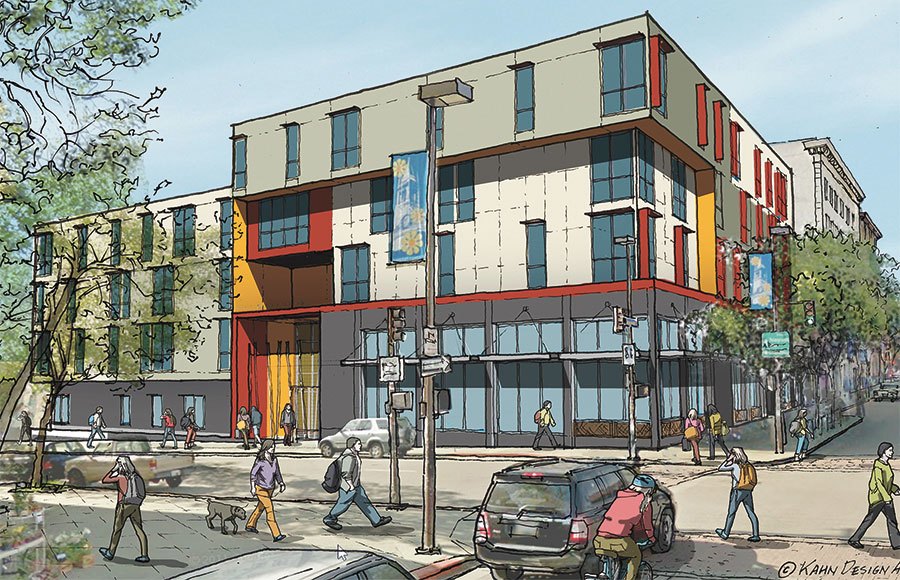
California State Senator Scott Wiener launched his third legislative attempt today at boosting California’s housing supply. SB 50 aims to address the state’s massive housing shortage, which has resulted in high home prices and rents, gentrification, displacement, inequality, homelessness, and a mass middle-class exodus to high-emission states like Texas and Arizona.
Because this housing undersupply is caused primarily by restrictive local land use policies in the state’s coastal job centers, Wiener’s approach has been to require cities and counties to allow apartment buildings near major transit centers. His first attempt in 2018 (SB 827) died quickly in committee. His second attempt last year (the birth of SB 50) was unilaterally shelved for a year by State Senator Anthony Portantino, who represents the affluent Southern California city La Cañada Flintridge (that city quickly became a poster child to housing advocates for high income single-family homeowners who don’t want to allow new residents in apartments into their neighborhoods).
The clock is now ticking on SB 50 in 2020. Under legislative rules, the bill must pass the full Senate by the end of this month — and first make it out of Sen. Portantino’s committee.
So Sen. Wiener is trying again, unveiling at an Oakland press conference this morning a critical amendment to delay statewide implementation for two years in order to give local governments the opportunity to develop their own plans that meet or exceed the housing, equity and environmental goals of SB 50. Otherwise, SB 50’s provisions relaxing height, parking and density requirements around major transit stations will automatically prevail.
Specifically, the state (through the Governor’s Office of Planning and Research) will develop guidance for these “local flexibility plans” by mid-2021. Cities and counties must then submit their plans for approval to the California’s Department of Housing and Community Development. That agency will then certify that the local plans are as stringent as SB 50. The local plans must be in place by January 1, 2023 in order to avoid defaulting to SB 50 statewide standards.
Otherwise, the substance of the bill remains essentially unchanged from last spring (here’s my rundown on the last changes before Sen. Portantino shelved it).
These new amendments seek to mollify critics who complained that the statewide approach undercuts local flexibility to meet the targets in a more tailored way. For example, rather than having uniform four-story apartment buildings around a major transit stop, perhaps a city would prefer to meet the overall housing production goals with a taller building in one spot and a shorter building across the street.
Will these changes be enough to satisfy local government objections? Probably not in many cases. The objections are less about local control and more about visceral dislike for apartment buildings and the residents they may bring. Arguments about local control — and relatedly against market-rate housing and instead building only subsidized affordable units — are often not made in good faith. Critics quickly move the goal posts as soon as amendments are made in their direction.
Take for example Sen. Portantino’s initial reaction to these amendments, complaining about not enough affordable housing, per his spokesperson to the San Francisco Chronicle:
“It was the senator’s hope that by taking a breath with SB50 it would focus efforts on actually building affordable housing as opposed to the market-rate housing predominant with SB50.”
This comment ignores that SB 50-type reform would result in the biggest boost to subsidized affordable units in the state’s history, at possibly a seven-fold increase. All without raising taxes or issuing bonds, and without delay about where to build these units even if public funds are available.
Still, these amendments may persuade critics who are on the fence. And perhaps most critically: will Governor Newsom now throw his weight behind the measure to help it pass? This is a big test for the governor on one of his signature campaign issues.
All in all, the next few weeks will be instructive as to whether or not California leadership can meaningfully address the the housing shortage and its severe equity, economic and environmental consequences.
One thought on “California’s Major Housing Bill, Take 3: New Amendments For Local Flexibility”
-
Pingback: The Bleak California Housing Picture — Some Key Data | Ethan Elkind
Comments are closed.


